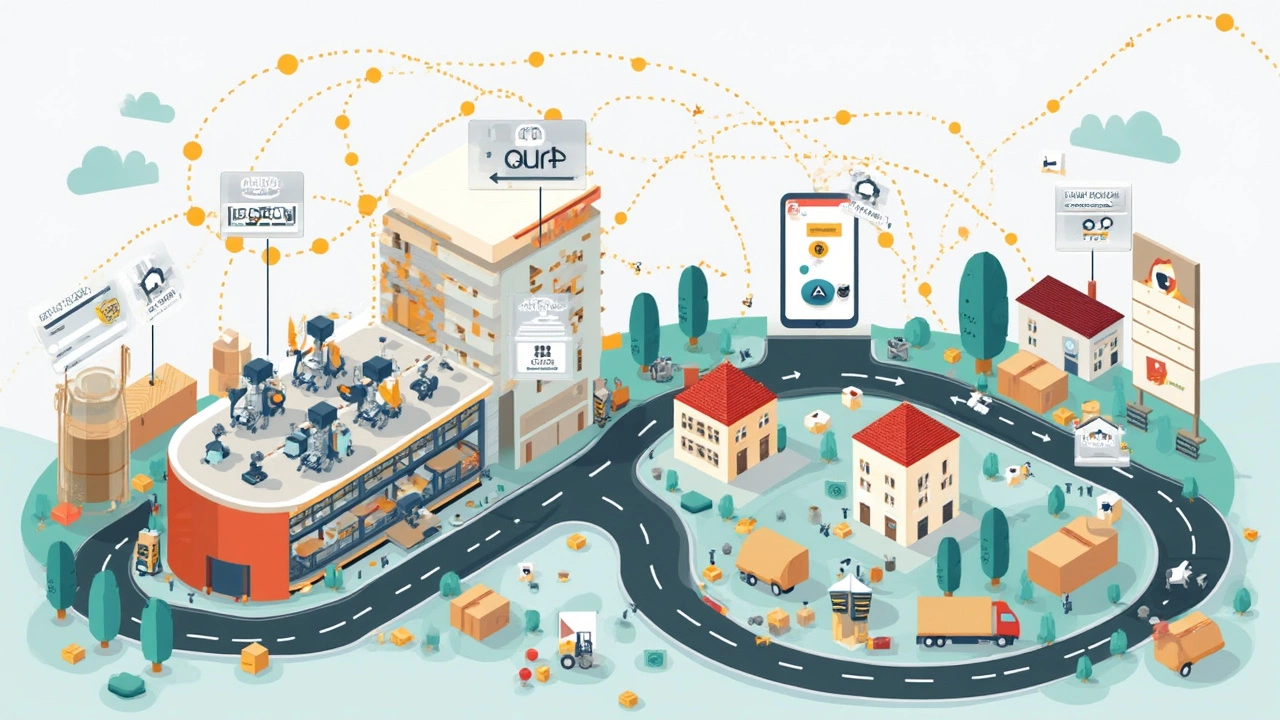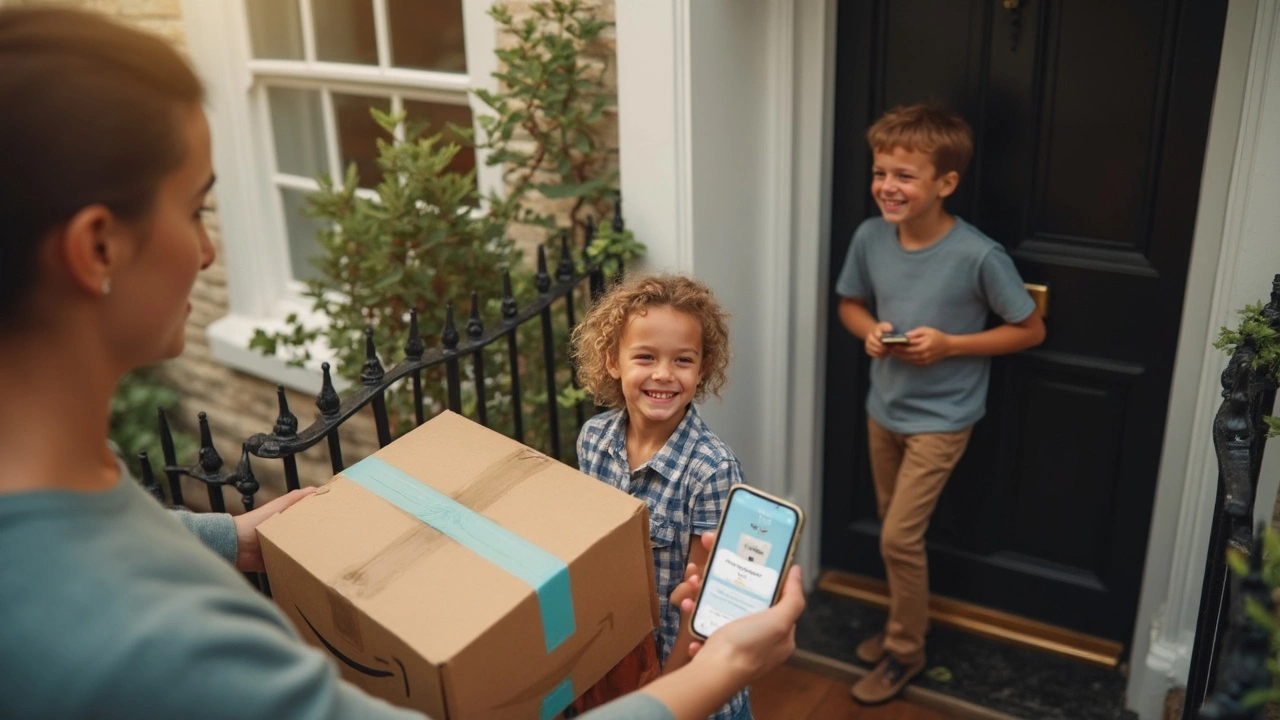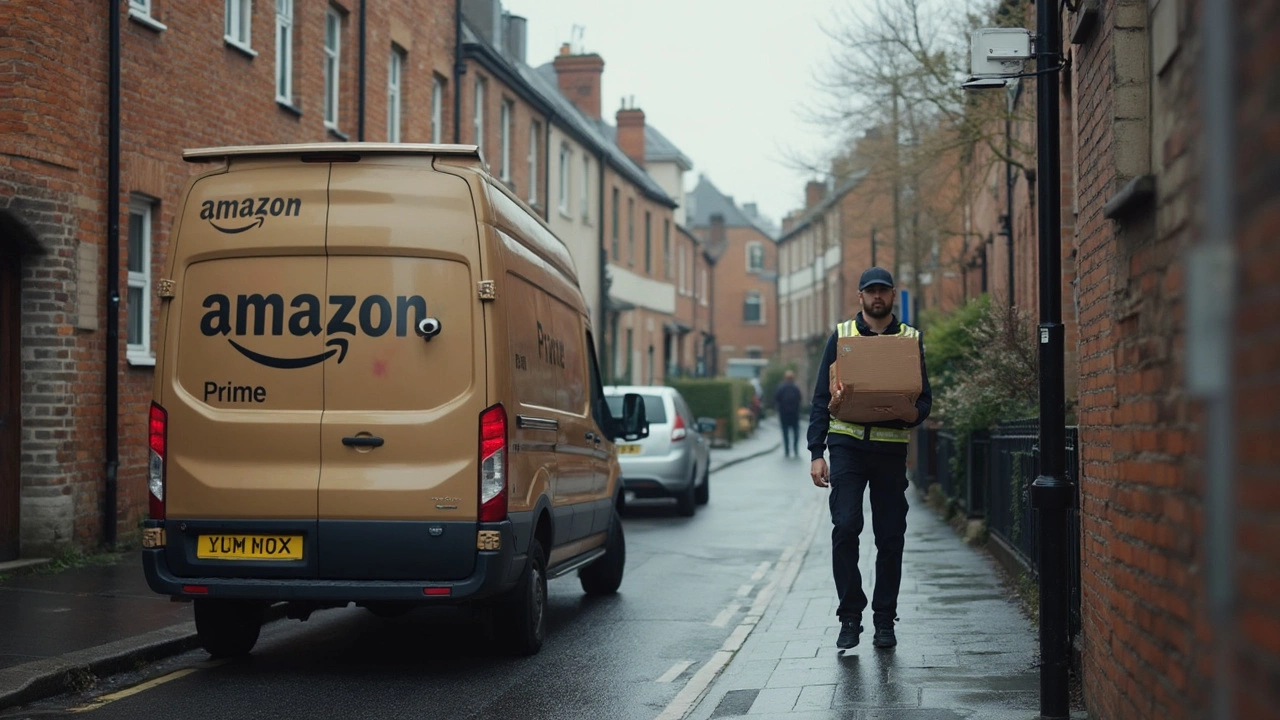Ever wonder how something you ordered at dinner somehow lands on your porch before breakfast? You click 'Buy Now,' and like magic, there's a package waiting outside—sometimes faster than my dog Jasper bolts for his favorite squeaky toy. The secret sauce is what Amazon calls 'last mile delivery.' It's the final, crucial step of your order's journey, responsible for racing your items straight from the nearest hub straight to your front door.
What Exactly Is Amazon Last Mile Delivery?
Last mile delivery refers to that final leg of the shipping process where a package travels from a distribution center to the buyer’s location. For Amazon, which ships millions of packages daily, this is a beastly logistical challenge. Picture a network of warehouses (fulfillment centers) spread across the map. When you order, Amazon algorithms instantly pick the nearest center that stocks your item, zipping it through their high-tech labyrinth of conveyor belts, robots, and human workers.
The story really gets interesting once the order leaves those massive facilities. That’s the start of the 'last mile.' Rather than relying just on classic carriers like UPS, FedEx, or the postal service, Amazon has built its own fleet called Amazon Logistics. They’ve hired an army of independent drivers and partnered with small delivery businesses known as Delivery Service Partners (DSPs). Imagine regular folks, sometimes your neighbors, driving Amazon-branded vans packed to the brim. Some drivers cover the same neighborhoods daily, learning every tricky door code and barking dog along their route.
Amazon’s goal here is control and speed. By handling more deliveries themselves, they can push more same-day, next-day, and two-day deliveries, even in suburban and rural spots where traditional couriers sometimes lag. In some cities, you’ll see Amazon’s blue vans outnumbering milk trucks, and Prime delivery stations pop up in unassuming warehouses on the edge of town.
Let’s break down the speed of this operation. In 2024, Amazon reported that over 4 billion Prime packages in the U.S. were delivered the same or next day. They move mountains of boxes using tech like AI-powered route planning and dynamic mapping that sidestep traffic snarls or weather hiccups. Packages are sorted by zip code, loaded for maximum efficiency, and handed off to drivers with digital instructions. Even when Jasper barked his head off during a thunderstorm, our Prime box made it without a hitch.

The Tech and People Powering Amazon’s Delivery Machine
Amazon didn’t just buy a bunch of vans and hope for the best. The backbone of their Amazon last mile delivery system is data. Every step, from warehouse to doorstep, is tracked and optimized. Drivers use Amazon’s Flex app, which maps out their route, tracks packages, navigates traffic, and even captures 'proof of delivery' photos. Ever seen those snapshots of a box on your doormat? That’s no accident—it’s carefully logged, often in real time, inside your Amazon account.
The company leverages predictive analytics to decide which inventory to position closer to high-demand zip codes, shaving off precious hours from each delivery window. When you order that next bag of dog food, there's a good chance Amazon already has one sitting at a hub just miles from your house. In the background, machine learning tools constantly study demand patterns, weather trends, and traffic to tweak delivery schedules. If a snowstorm threatens, Amazon can automatically reroute packages to a different delivery station or swap a van for a driver with a four-wheel drive vehicle.
But there's plenty of human touch too. While Amazon deploys hundreds of thousands of drivers, many are self-employed using the Amazon Flex program. You can pick up blocks of deliveries, get paid per route, and work on your own schedule. This gig-style model means the company can flex its driver workforce up and down as orders spike (like during Prime Day or holidays) without getting bogged down by long-term payroll commitments.
Amazon’s Delivery Service Partners (DSPs) are small businesses that lease Amazon-branded vans and take on big delivery quotas. Each DSP manages its own team, usually working long shifts to meet daily package goals. There are stories of drivers hustling through rain, heat waves, and all sorts of neighborhood obstacles—think loose dogs, missing gate codes, or that classic 'I’m not home, but please leave it behind the potted plant' note.
Here’s a fun fact: Amazon’s roster of last mile delivery vehicles is massive. As of late 2024, they reported more than 100,000 e-vans globally, with Rivian electric vans rolling out across the U.S. Not only does this cut emissions, but they’re quieter—a bonus for folks who, unlike Jasper, want their mid-afternoon nap undisturbed.
| Year | Amazon Same/Next Day Deliveries (Billion) | Delivery Vehicles (Global) | Prime Members (Million, US) |
|---|---|---|---|
| 2022 | 2.5 | 70,000 | 153 |
| 2023 | 3.2 | 85,000 | 164 |
| 2024 | 4.1 | 100,000+ | 170 |
Safety is a huge deal, too. Amazon outfitted vans with cameras, sensors, and telematics to monitor things like speed, sudden stopping, or distracted driving. The Flex app pings drivers if they’re running late or skipping deliveries. There have been public debates about driver workload, but Amazon claims these tech tools improve not only efficiency but also package accuracy and safety—for the people behind the wheel and those waiting at home.
Then there’s the famous yellow delivery lockers. For apartment residents and folks worried about package theft (porch pirates are real), Amazon lockers and pickup points let you snag your orders on your own time. The system’s flexibility shines during bad weather or when you want to avoid soggy cardboard. If Jasper could order his treats and pick them up himself, I’m pretty sure he’d be all over this option.

Tips, Quirks, and the Future of Fast Home Delivery
If you’re hoping for smooth, speedy delivery, a few things can give both you and your Amazon driver a smoother ride. First, double-check your address. An updated, super-clear delivery address (with apartment numbers, buzzer codes, etc.) is gold. With so many stops to make, every minute counts. If your porch is hard to spot or there’s a gate, leave instructions in your Amazon account—yes, drivers do read those notes.
If you want to keep packages safe, consider buying a lockbox or using an Amazon locker. The numbers around package theft are a bit wild—a 2024 consumer study found nearly one in five online shoppers had lost a package to thieves at least once. Lockers (which you’ll find everywhere from supermarkets to gas stations) let you scan a code and grab your stuff without waiting at home.
Want environmentally conscious deliveries? Choose Amazon’s “Amazon Day” delivery option, which bundles your week’s orders so everything arrives in one go, reducing emissions and packaging waste. In some cities, you can even pick an electric-only van delivery window. There’s also evidence that Amazon’s focus on high-tech routing and local inventory means faster, fewer delivery trips overall, which can cut congestion (and those double-parked vans blocking your driveway).
Amazon’s last mile system keeps evolving. In big cities, you might spot sidewalk robots or even drone deliveries launching trial runs. While still rare, these robotic couriers represent the next leap—imagine getting your phone charger via a six-wheeled robot humming down your block. In Phoenix and Los Angeles, pilots have carried groceries and small items directly to customers' doors, monitored by remote operators and cameras.
For tech-savvy shoppers, there’s even more coming. Real-time tracking lets you see exactly where your package is, sometimes down to the stop before yours. If you’re not going to be home, you can reschedule or give delivery preferences on the app. The Flex and DSP app systems are constantly tweaked with driver feedback to minimize hiccups and late arrivals.
If you’re curious about working on the last mile front line, applications are always open for Amazon Flex. It’s a side gig you can squeeze in around school or another job. There’s potential to make extra cash, though like any gig work, it’s a hustle, especially during peak Prime season when everyone wants everything right now.
Amazon remains deeply secretive about some parts of its logistics, but it’s clear they’re pouring big bucks into constantly speeding up that last stretch between warehouse and the welcome mat. With more automation coming and new hubs opening (sometimes nearly one per week in the US in 2024), the odds of seeing a blue van—or a robot—on your block are only going up. Next time you rip open that familiar brown box, remember: behind every fast Amazon package is a wild, high-speed race across software, highways, and neighborhoods that all comes down to that last stretch—the bit that matters most to you and Jasper alike.


